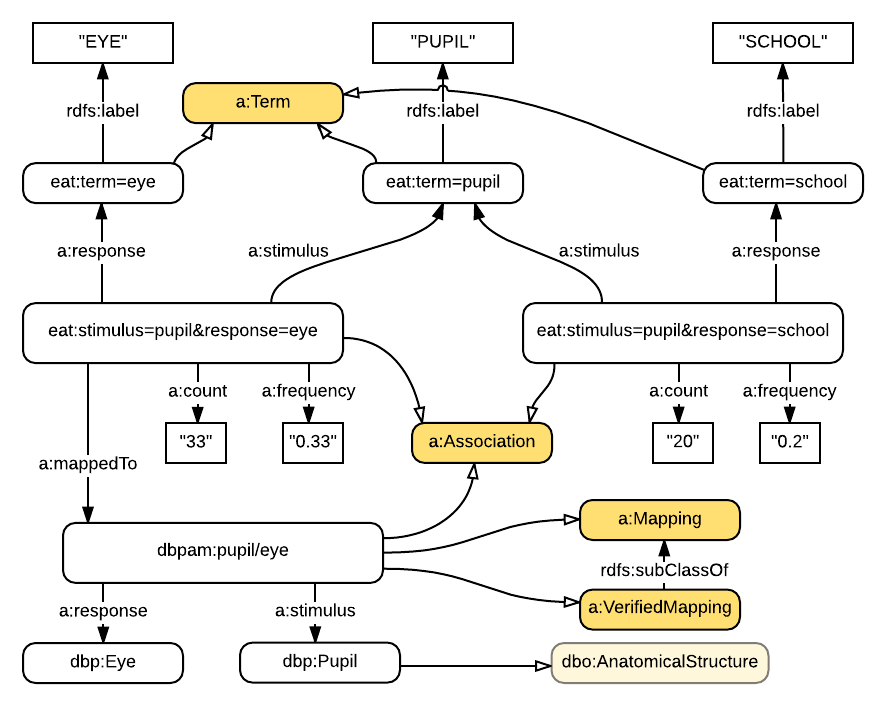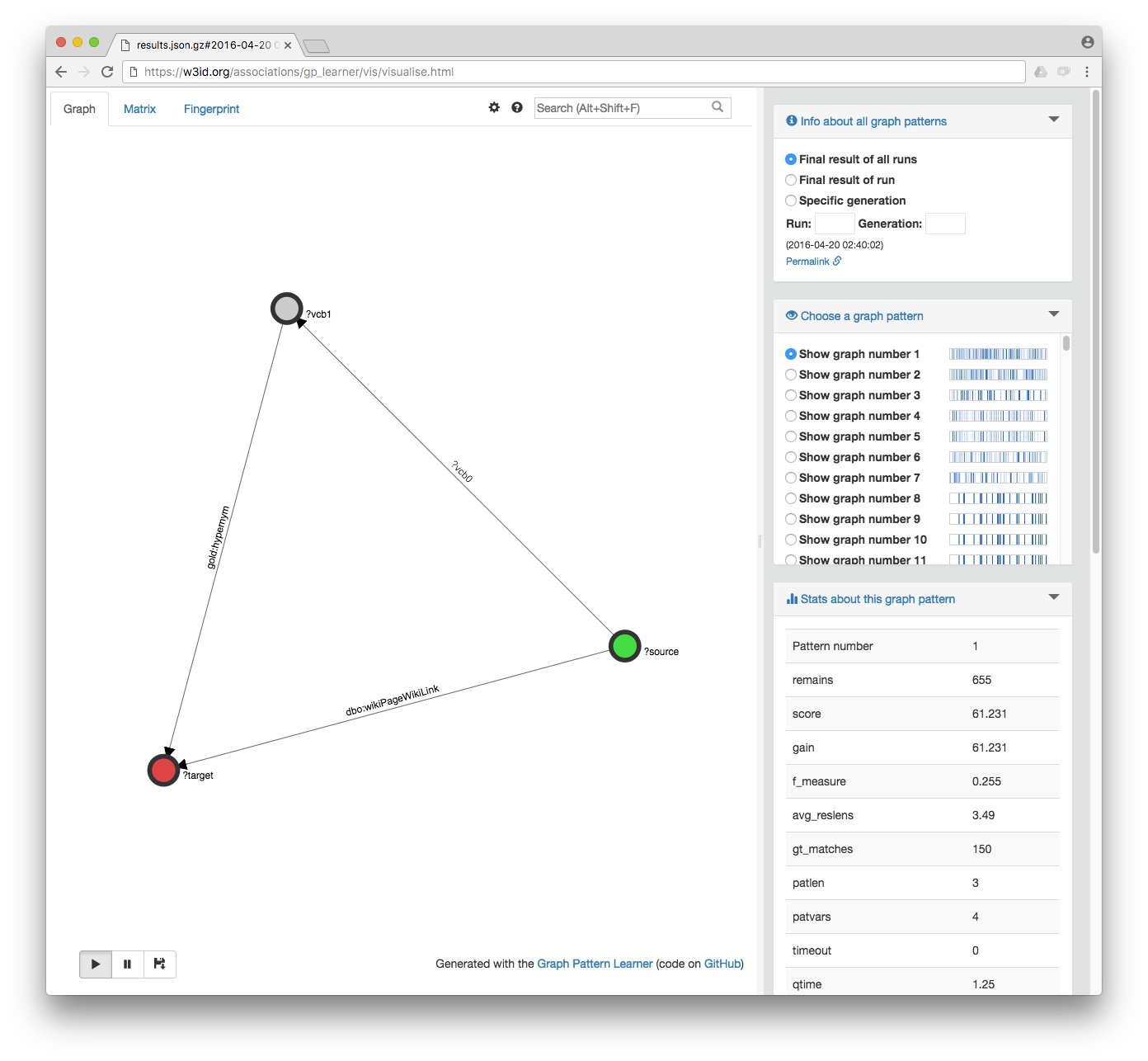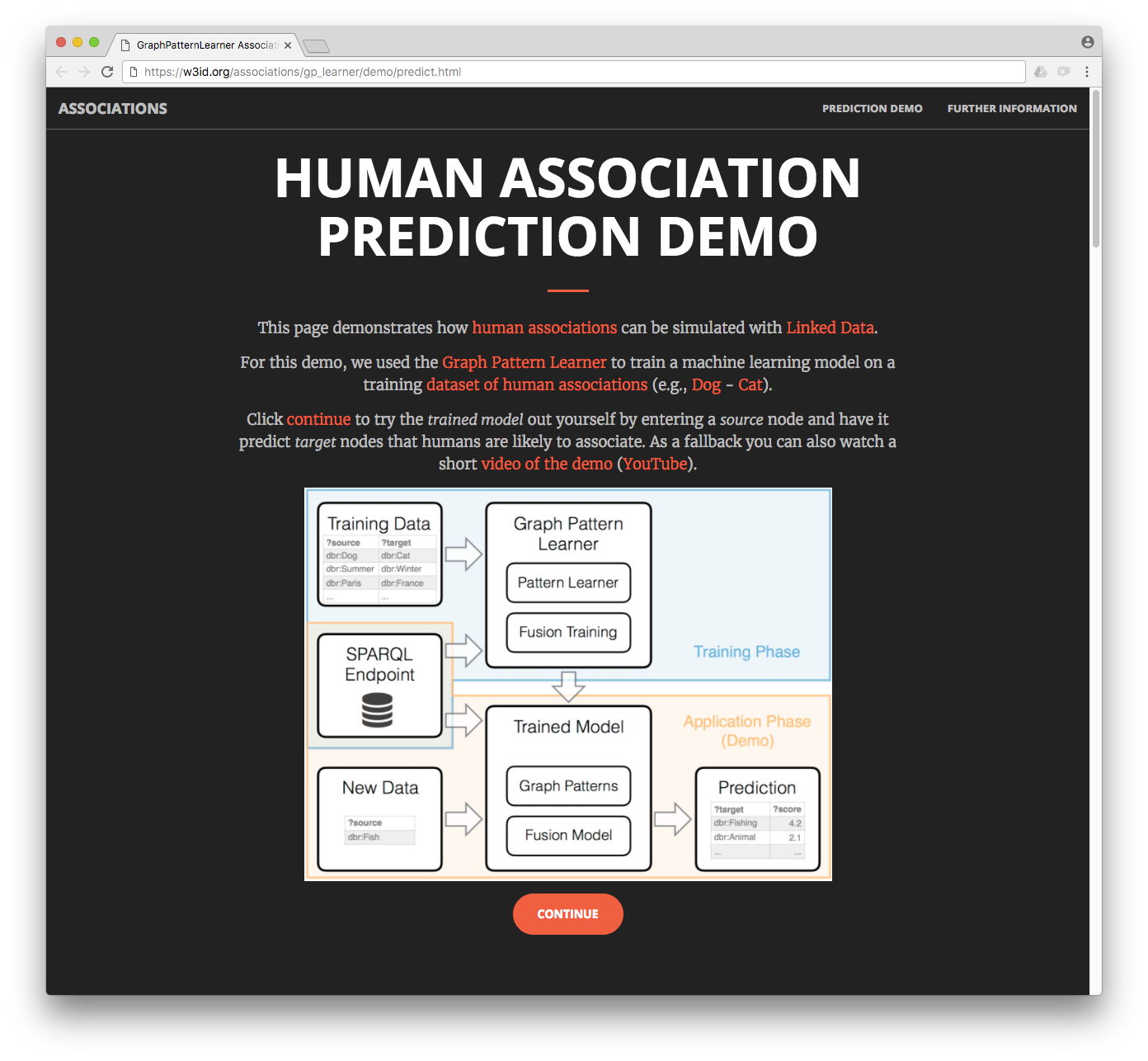Association Vocabulary
The generated association vocabulary ( RDF | OWL | TTL ) has its own doc page.
It mainly consists of the classes Term, for a stimulus or response, and Association which connects them to their count and frequency. It also defines classes Mapping and VerifiedMapping to map associations from one dataset to another with the mapped to property.
An example for all this can be found in the following drawing. In the middle you can see the stimulus "pupil", which can lead to the responses "eye" (left) and "school" (right). Both associations are mapped to a corresponding association node which also contains information about ther counts and frequencies. The one on the left further was mapped to a semantic association between the two DBpedia entities dbr:Pupil and dbr:Eye. As you can see in this process the ambiguous term "pupil" was disambiguated to the right semantic entity dbr:Pupil.
See our papers in the publications section for more details.



